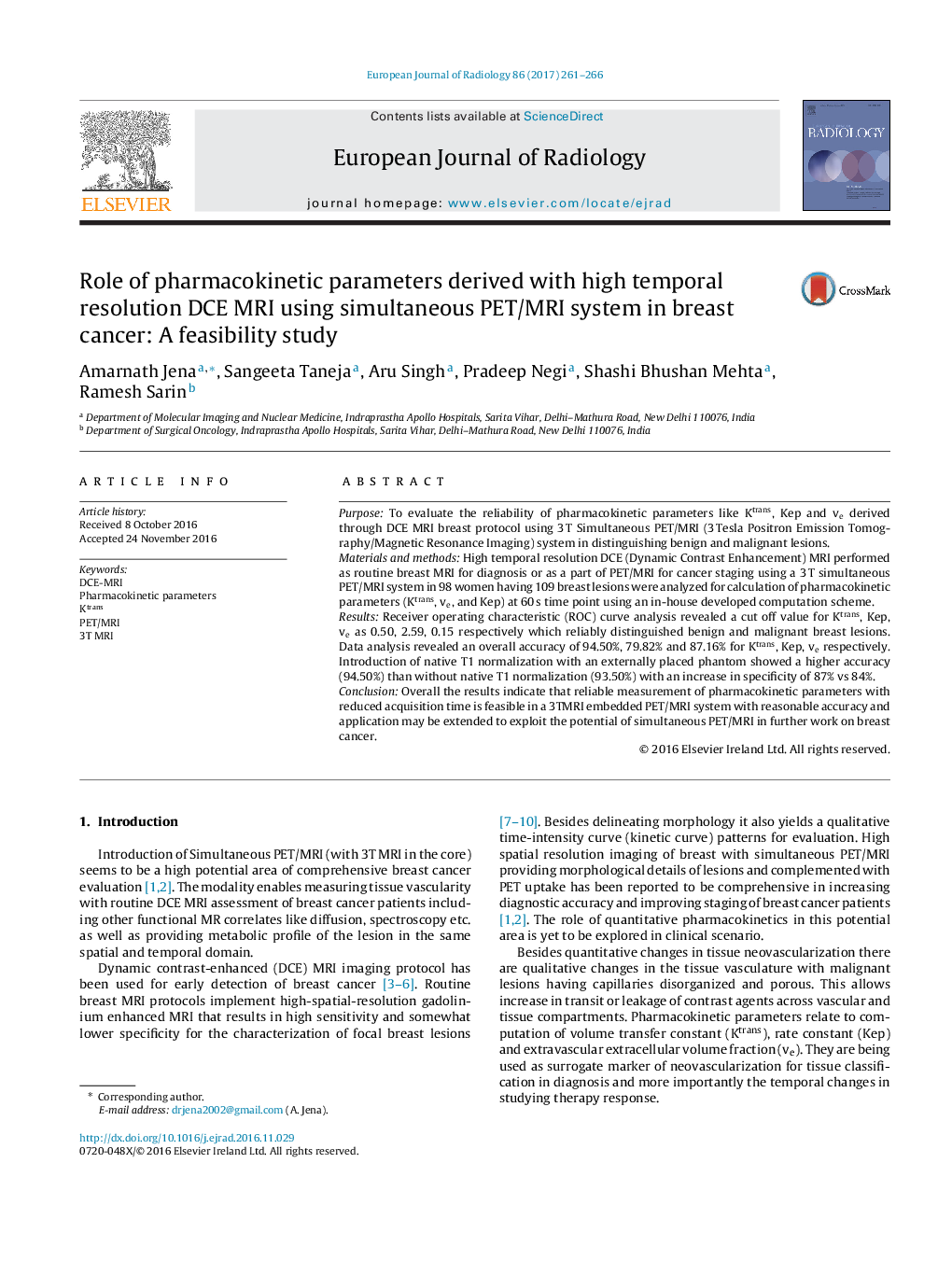| Article ID | Journal | Published Year | Pages | File Type |
|---|---|---|---|---|
| 5726144 | European Journal of Radiology | 2017 | 6 Pages |
â¢Simultaneous PET/MRI (with 3T MRI in the core) for quantitative pharmacokinetics.â¢Diagnostic accuracy of pharmacokinetic parameters like Ktrans, Kep and ve acquired through this system.â¢Incorporating high temporal resolution sequence with short acquisition time of 60 s within the routine DCE MRI in a simultaneous PET/MRI system.
PurposeTo evaluate the reliability of pharmacokinetic parameters like Ktrans, Kep and ve derived through DCE MRI breast protocol using 3Â T Simultaneous PET/MRI (3Â Tesla Positron Emission Tomography/Magnetic Resonance Imaging) system in distinguishing benign and malignant lesions.Materials and methodsHigh temporal resolution DCE (Dynamic Contrast Enhancement) MRI performed as routine breast MRI for diagnosis or as a part of PET/MRI for cancer staging using a 3Â T simultaneous PET/MRI system in 98 women having 109 breast lesions were analyzed for calculation of pharmacokinetic parameters (Ktrans, ve, and Kep) at 60Â s time point using an in-house developed computation scheme.ResultsReceiver operating characteristic (ROC) curve analysis revealed a cut off value for Ktrans, Kep, ve as 0.50, 2.59, 0.15 respectively which reliably distinguished benign and malignant breast lesions. Data analysis revealed an overall accuracy of 94.50%, 79.82% and 87.16% for Ktrans, Kep, ve respectively. Introduction of native T1 normalization with an externally placed phantom showed a higher accuracy (94.50%) than without native T1 normalization (93.50%) with an increase in specificity of 87% vs 84%.ConclusionOverall the results indicate that reliable measurement of pharmacokinetic parameters with reduced acquisition time is feasible in a 3TMRI embedded PET/MRI system with reasonable accuracy and application may be extended to exploit the potential of simultaneous PET/MRI in further work on breast cancer.
